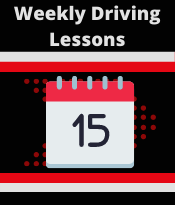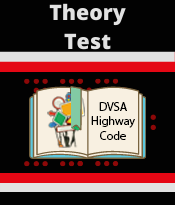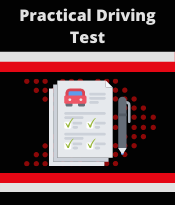Roundabouts are one of the most common junctions that you will encounter on UK roads. They come in many different sizes, and can often have multiple lanes and exits. As they can often be busy, you must understand how to navigate roundabouts and how to use them safely and responsibly.
Due to their frequency of use on UK roads, you will likely encounter roundabouts when sitting your driving test and beyond. So today, we’re taking the time to explore how to use roundabouts safely and responsibly.
A Brief History Of Roundabouts
The first roundabout in the UK was built in Letchworth Garden City in 1909. Before this, circular junctions could be found on UK roads. These were more basic than modern roundabouts, with the main difference in that they did not prioritise circulating traffic. Famous examples of circular junctions include the Circus in Bath and Piccadilly Circus in London. Although, Piccadilly Circus has since lost its shape, with part of the junction becoming pedestrianised.
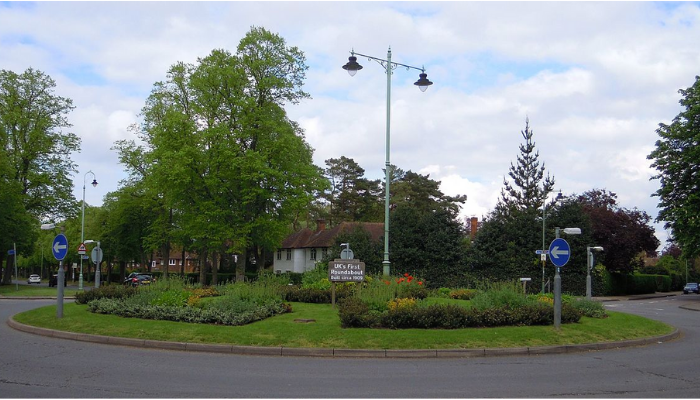
The modern roundabout became widespread in the UK in the 1960s, which was also around the same time the ‘priority rule’ was introduced. This gave priority to the traffic using the roundabout, with traffic on approach ‘giving way’. Since then, there have been some minor changes, with the introduction of multiple lanes and traffic lights on some larger roundabouts.
Why Do We Have Roundabouts?
Roundabouts were introduced to help control the flow of traffic. They are typically found where two or more roads intersect, and help to keep traffic moving. They are safer than some other junctions and crossroads, as they ensure that traffic is always travelling in the same direction.
How To Safely Approach Roundabouts
Before entering a roundabout, you must ensure that you approach the junction safely. This can be done by ensuring that you position yourself in the correct lane early, using the MSM routine (Mirror, Signal Manoeuvre). Be sure to scan the roundabout early, looking to your right as well as ahead. You must ensure that you give way to any traffic approaching from the right.
When approaching the roundabout, make sure that you are aware of any vulnerable road users, including cyclists, motorcyclists and horse riders. You must also keep a lookout for pedestrians, with many roundabouts having crossings near their entrance.
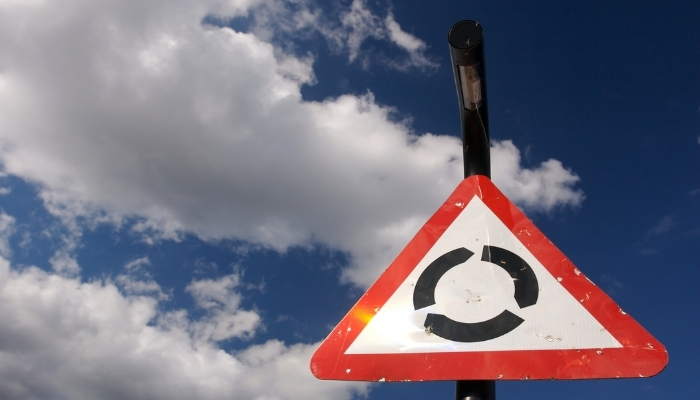
Avoid Hesitating
Roundabouts can be challenging for learner drivers, as they can often be busy. This sometimes results in hesitation. If the roundabout is clear, you must go. This highlights the importance of positioning yourself early and anticipating the traffic already on the roundabout.
You can anticipate the flow of traffic by watching the position, speed and angle of vehicles using the roundabout. If traffic exits the roundabout, there may be an opportunity for you to go. Some drivers may not indicate or indicate incorrectly, so be sure to make sure that the way is clear.
Using The Roundabout To Turn
So far, you’ve learned how to safely approach a roundabout. Next, we’re going to take a look at how to turn. To do this effectively, you will need to make sure that you’re in the correct lane. Typically the left lane is for turning left and continuing straight ahead, with the right lane used for right turns. However, this can vary between roundabouts, so the best practice is to use the road signs and markings. You should always return to the left lane where it is possible and safe to do so.
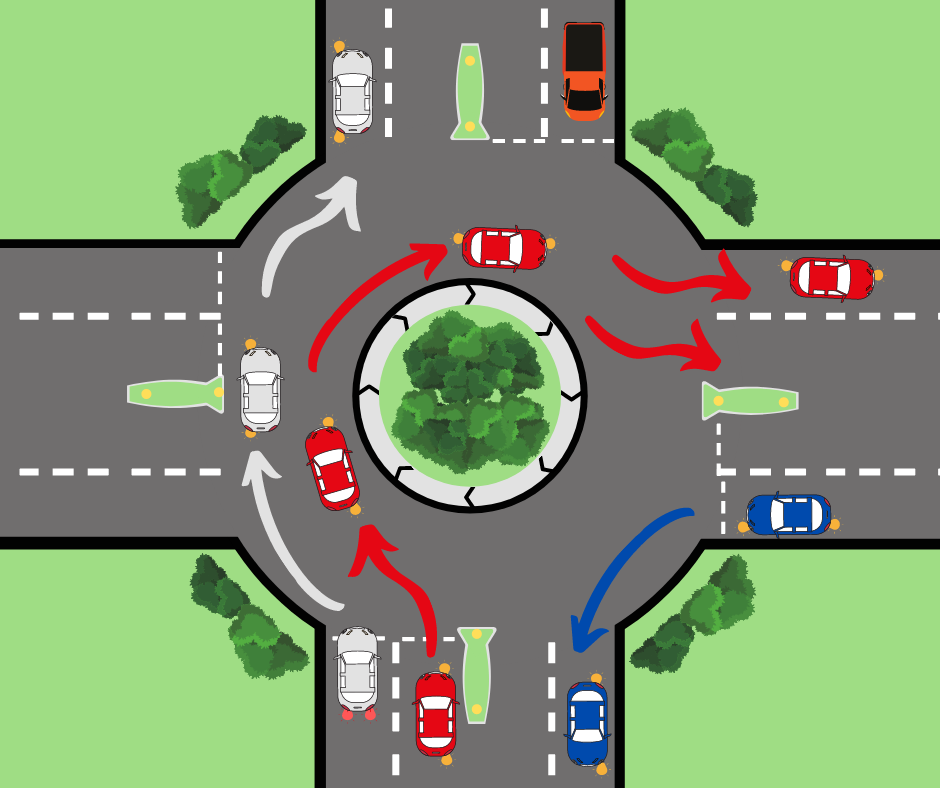
Turning Left
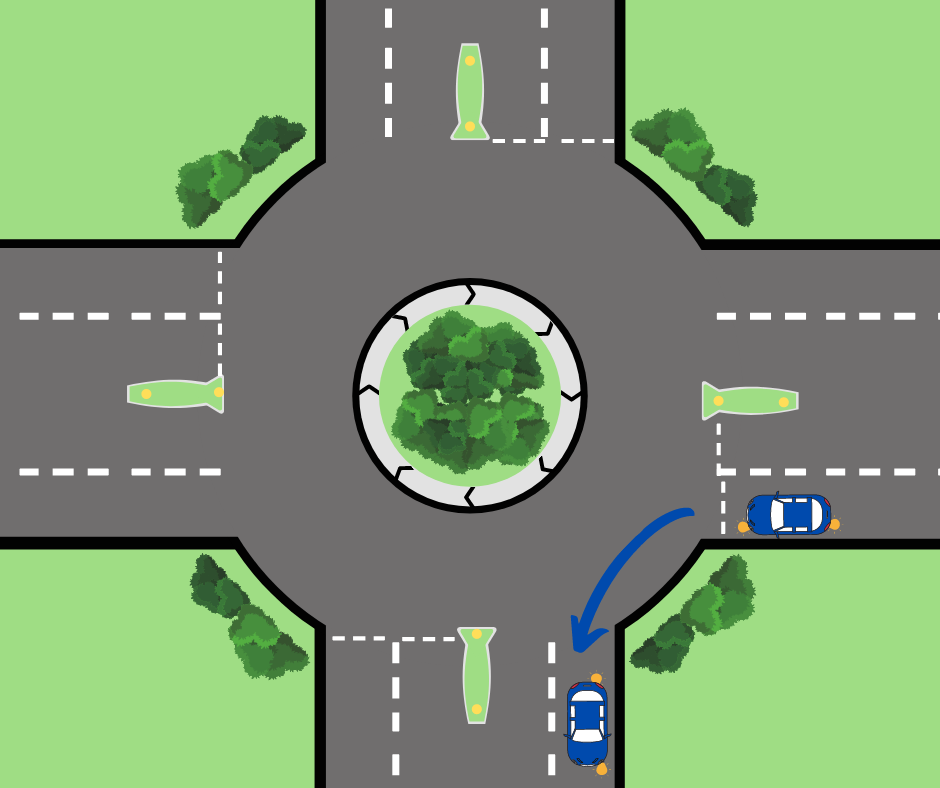
When turning left at a roundabout, you should:
- Check your mirrors on approach.
- Keep left. (You may have other vehicles on your right, so you must stay in your lane).
- Signal left.
- Approach carefully. Look right and ahead to where you are turning. Ensure that you give way to traffic on your right.
- Once there is an opportunity you can go, keeping left.
- Keep indicating to communicate that you’re leaving the roundabout.
Some roundabouts will have more than one exit on the left. When you are not leaving the roundabout at the first exit, do not signal on approach. You should only signal on the approach to your exit.
Following The Road Ahead
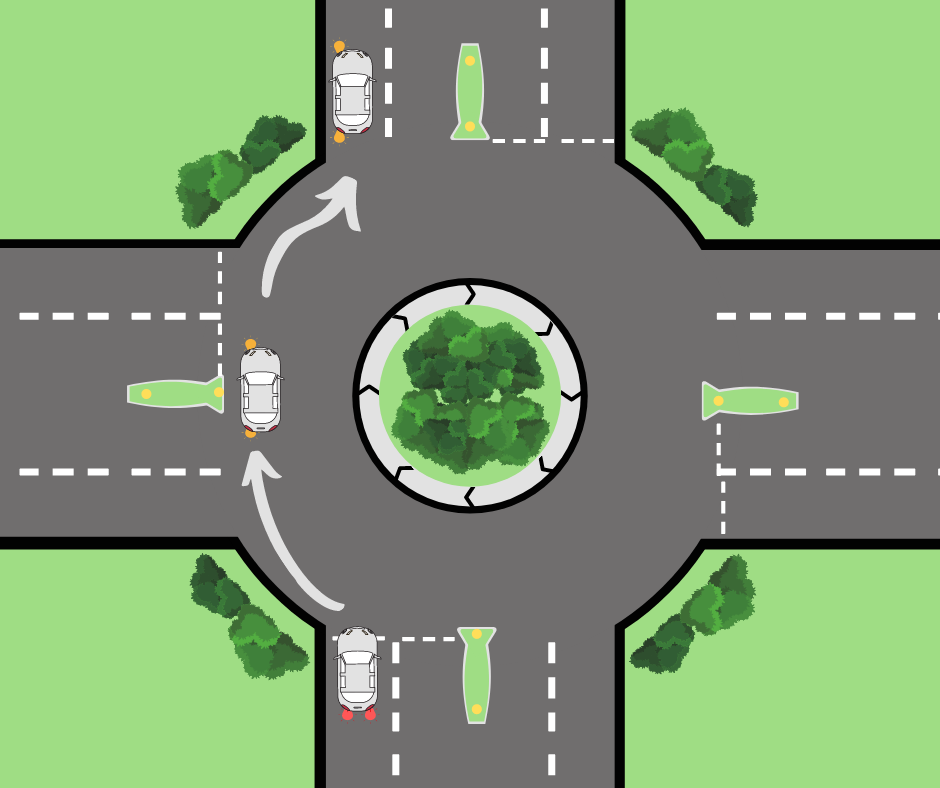
When continuing to follow the road you should:
- Keep left as standard, if no lines or road markings are telling you otherwise.
- Check your mirrors, approaching the roundabout, looking right and ahead, giving way to the right.
- Once there is an opportunity, move off, keeping in the left-hand lane (remember you may have vehicles on your right). Be aware of a tailback on the roundabout, as your exit may be blocked, so be prepared to stop, or adjust your position if safe to do so.
- Check your mirrors, especially on your left, and signal after passing the exit before yours.
- Exit the roundabout
On some larger roundabouts, there may be a lane specifically for following the road ahead. If this is the case, be sure to select the correct lane and remain there until exiting. Be aware that you may have vehicles on either side of you in this instance.
Turning Right
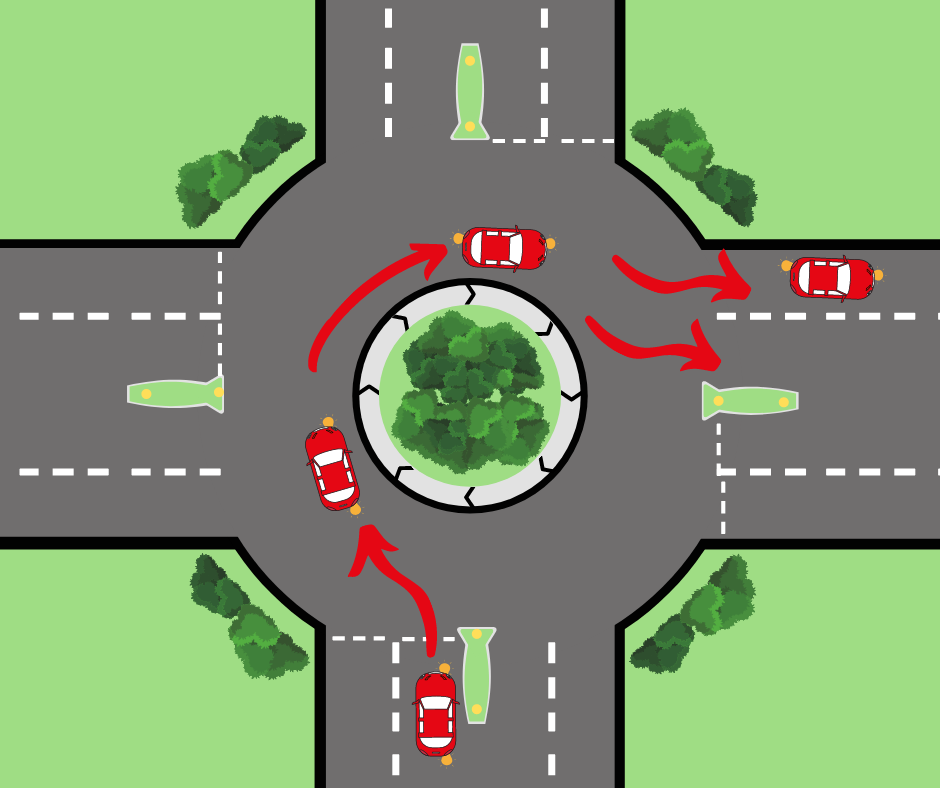
As you approach the roundabout look for any road markings indicating which lane you should move into.
- If there are no markings, check your mirrors and signal right, moving into the right-hand lane. Once you are in your lane, continue signalling right.
- Approach the roundabout with care, looking both right and ahead, giving way to the right.
- Once there is an opportunity you can go, keeping right. You will likely have vehicles on your left.
- Check your mirrors, especially the one on your left, and signal left after you’ve passed the exit before yours.
- Move left and exit the roundabout.
Roundabouts Controlled By Traffic Lights
Some larger roundabouts with multiple lanes will be controlled by traffic lights. These roundabouts are typically safer, as the flow of traffic is controlled, meaning that you do not need to give way to the right. Although you should still check right before entering the roundabout, to ensure the way is clear.
Some roundabouts also combine give way lines with traffic lines, so you will need to give way to the right in this instance.
Roundabout FAQs

When should I start indicating?
Unless signs or markings indicate otherwise:
- When taking the first exit, you should signal left and approach the left lane. You should keep left on the roundabout, leaving your signal on until exiting.
- If exiting on the right, you should signal right and approach the right lane. You should keep right, with your signal on until you intend to exit. Signal left after passing the exit, before the one you want, and leave the roundabout.
- If following the road ahead, you should select the appropriate lane on approach to and on the roundabout. You do not need to signal on approach unless changing lanes. Stay in your lane and signal after passing the exit before the one you want.
What if there is a long vehicle on the roundabout?
Long vehicles typically require more room on a roundabout. You should never drive next to a large vehicle on a roundabout as they may take up multiple lanes. It’s usually best to stay well back and give them plenty of room.


